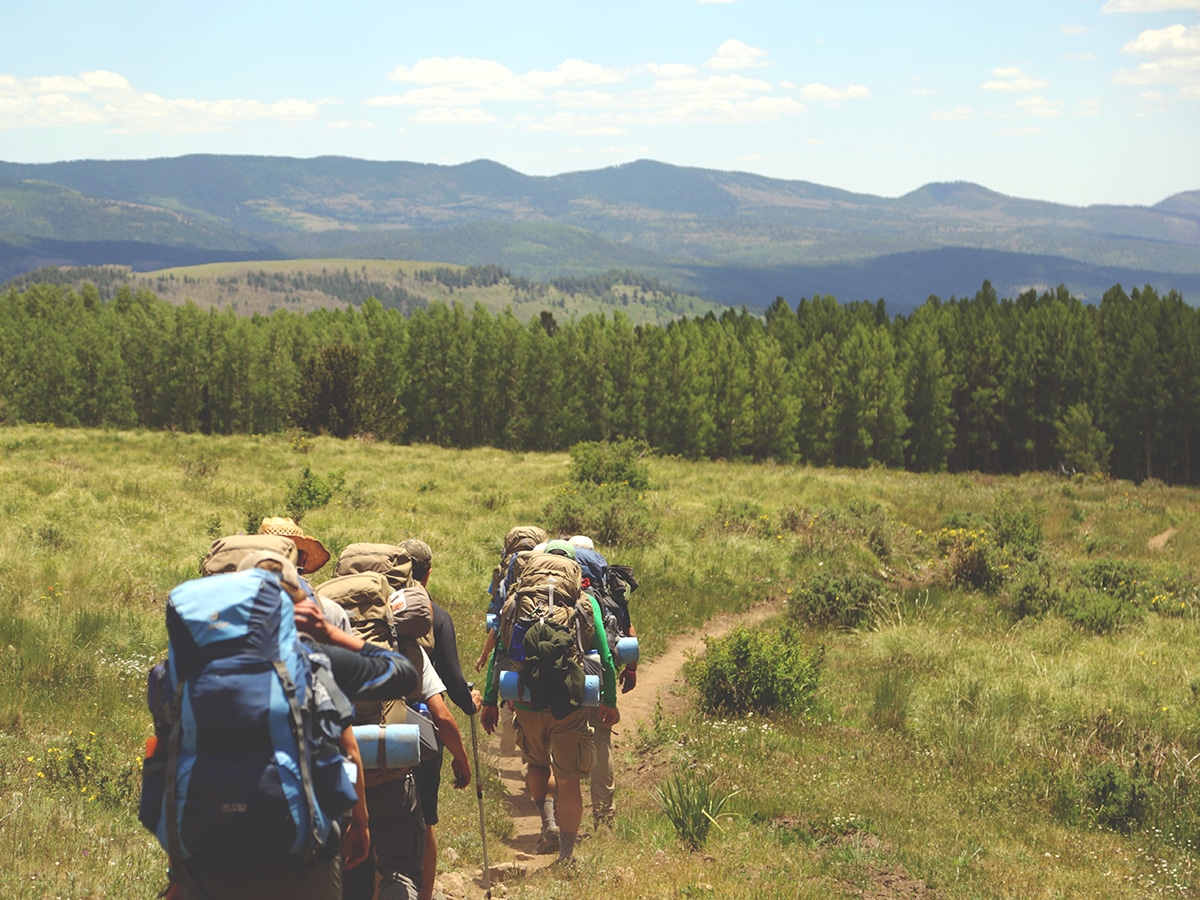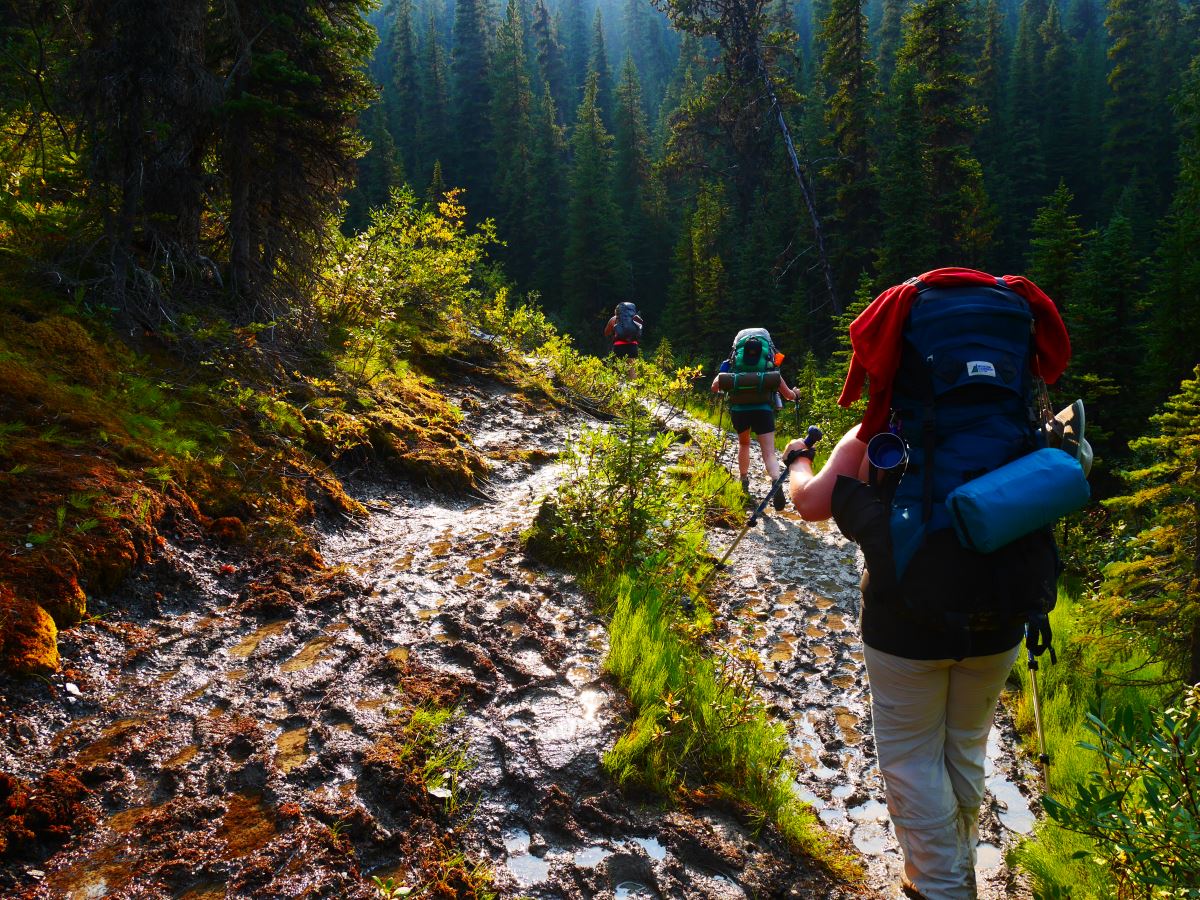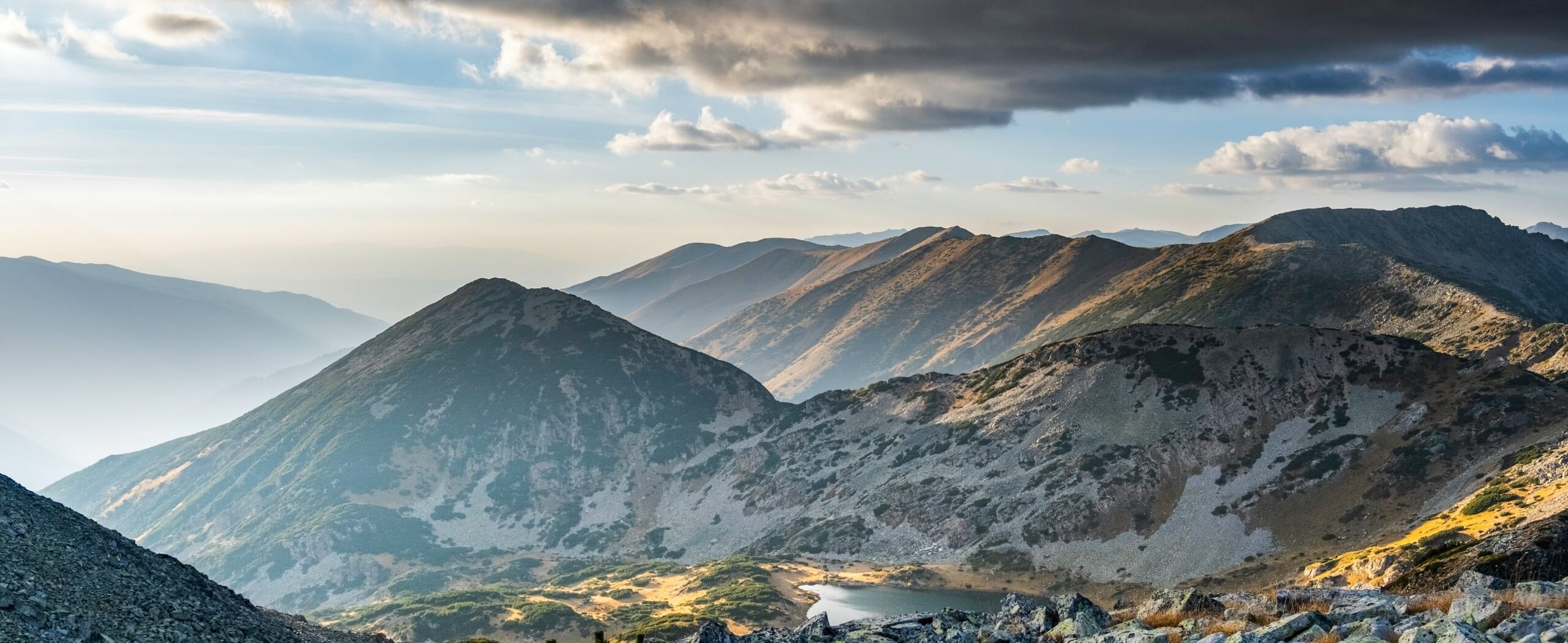When it comes to the outdoors, we all need to do our part. By following common trail etiquette and coming together to maintain these rules, we can ensure that our parks and backcountry remain the oasis it currently is—for generations to come! Knowing trail etiquette will not only help to preserve parks but show respect to other explorers, making your hiking, backpacking, or mountain bike trip all the merrier.

Common trail etiquette
So you’re thinking of hiking or backpacking for the first time? If you’re completely green, be sure to check out our backpacking 101 guide for how to prepare for your initial adventure. Note that hiking trails are often shared with other users – mountain bikers, horses and their riders, snowshoers, cross country skiers, even dogs! Different trails allow different users, so make sure you’re checking if your mode of transport is allowed on each particular trail, and follow the guidelines below for proper trail etiquette.
To best share the trail, here are our tips for summer:
- Bikers yield to all, specifically hikers & horses.
- Hikers yield to horses.
- As the most unpredictable member of the bunch, horses have the right of way when passing on trails. To yield to a horse, step off the trail on the downhill side, and wait quietly while the horse passes.
- When two groups of hikers are passing each other, the person travelling uphill has the right of way – unless they indicate that they’re stopping and for you to pass.
- When stepping off the trail to let others pass, stand facing the trail, so your backpack isn’t in the way.
- If you are passing another group going in the same direction, or being passed, follow the rules of the road – stay right, pass left.
- Hiking in single file lets groups pass each other more easily.
- Hike at the pace of the slowest member of your group – and when taking a break, wait until the slowest member is ready to start again.
To share the trail in winter, here are our trail etiquette tips:
- Stay off cross-country ski tracks. This means dogs, snowshoes and bigger backcountry skis.
- Keep fat-bikes off XC ski trails. The speed of these two types of activities are not a great mix.
- Don’t stop for a break in the middle of a trail, especially at the bottom of a downhill.
- Don’t snowshoe and backcountry ski tracks.

Know how to use the trails correctly
Trails are important not only to follow the best route through the backcountry, but to reduce our impact on fragile wilderness environments. Without trails, the impact of thousands of hiking boots would be everywhere, causing widespread damage. Go to any popular trail in your local area and you’ll see signs of this. Places where people frequently step off trail tend to already be sites that are easily eroded, such as steep hills and depressions where water pools.
So, stick to the trail, don’t take shortcuts!
Your hiking boots are waterproof – walk through the puddle, not in the grass around it. Enjoy the leisurely descent switchbacks allow, don’t make shortcuts. Our goal as hikers should be to leave no trace of our passing through.
What is Leave No Trace?
Leave No Trace is a set of outdoor ethics designed to minimize our impact on the environment. It also ensures future outdoors users will be able to enjoy the outdoors in a clean and pristine manner.
The fundamentals of Leave No Trace are:
- Travelling and camping on durable surfaces.
- Dispose of all waste properly. If you pack it in, pack it out. This includes the gross stuff – like toilet paper (link to backcountry pooping article here?), food scraps, and dog poop bags. Poop decomposes – plastic bags of poop do not. It’s a great idea to carry a small garbage bag with you so you can pack out trash you find along the way, even if it’s not yours.
- Take only pictures. Don’t pick flowers, take rocks or cut down trees. In Hawaii Volcanoes National Park, thousands of people have posted volcanic rocks and black sand back to the island, scared of the native Hawaiian fire goddess Pele, said to bring bad luck to anyone who removes earth from her land. While not all trails have a deity protecting them, removing items from natural areas for your own benefit is a poor way to respect them; in National & Provincial Parks it’s also illegal: “Allow others a sense of discovery by leaving rocks, plants, archaeological artifacts and other objects of interest as you find them.”
- Modifying the landscape in any way is unacceptable – especially writing graffiti or carving initials into tree trunks. In some places, rock cairns may be used as official trail markers. Building your own rock cairn or inukshuk complicates and confuses the route, disturbs important habitat for insects and plants, and as they begin to multiply, become unsightly.
- Modifying a landscape also includes modifying an animal’s behaviour by disturbing it. Stay back at least 30 meters from all wildlife, and if the animal shows signs of being affected by your presence, leave the area. Invest in a good zoom lens if you want Instagram-worthy pictures and keep wildlife wild.

Keep dogs on a leash
One way to avoid “negative” wildlife encounters when hiking is to keep pets on a leash. Bears, in particular, don’t have much interest in a group of humans, unless the humans are disturbing them. An off-leash dog however, is a threat. It reminds them of predators like wolves and coyotes. Dogs are small enough for a bear to challenge confidently.
And what is Fido going to do when a bear starts charging him? Run directly back to you with a bear close behind. There have even been instances of smaller dogs being taken by cougars while being walked off leash on the outskirts of town. And although your dog is perfectly well-behaved, and would never rush at a small child, or bite a stranger, or ignore you when you call it, it must remain on leash anyway – think of it as a good example for all those other, poorly trained dogs.
In fact, keeping your pet on a leash is about keeping your pet safe as well. We think back to a friend’s pooch who chased down a young porcupine one day. That was a painful and expensive outcome for the pooch and our friend.
Respect others
The world is starting to change, but trail etiquette doesn’t have to! Maybe we are young people that are becoming old and crotchety – like Grandpa Simpson, ready to yell at the clouds when a hiker walks by playing loud music through low-quality speakers. This is not what many people go to nature for.
Most people enjoy hiking and being out in nature, which ideally means getting away from loud, distracting noises and enjoying the silence & solitude of the outdoors. Be considerate of others on the trails and refrain from making excessive noise – whether it’s loud shouting, music, or barking dogs. Recognize that sound travels further in the outdoors, especially in the evening.

What if someone has poor trail etiquette?
What should you do if you see someone displaying poor etiquette on the trail, such as littering, going off trail, getting too close to wildlife? Most bad behaviour simply comes from ignorance; however, not every ignorant person is receptive to feedback. For people in your group, usually explaining the impact of their behaviour is likely to result in a change in their behaviour. When somebody isn’t in your group behaves badly, they are obviously not as interested in a stranger’s opinion, and in some cases can become aggressive. We’ve found the most effective strategy is to explain that their actions could lead to a fine and that there was a ranger nearby recently.
Another option is to report them to a park warden or park authority service.
Ultimately, if everyone respects and treats other trail users they way they’d want to be treated, then we can all focus on pushing ourselves those last few meters up the hill and appreciating the views from the top. We’ll have this wonderful wilderness kept pristine for generations to come.
Heading on your first backpacking trip? After you’ve nailed the general trail etiquette rules, consider reading about what to pack and buy for gear on your first multi-day adventure!



Comments